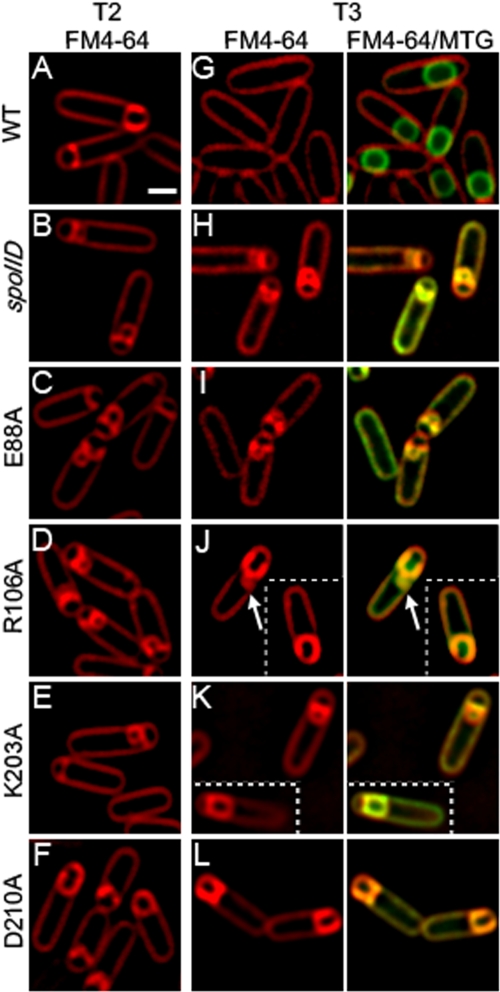FIG. 3.
Mutant SpoIID proteins show engulfment defects. Sporulation was induced by resuspension at 37°C and samples were collected at indicated times of sporulation (in hours). Scale bar, 1 μm. (A to E) Membranes were stained with FM 4-64 in strains expressing a single copy of either wild-type or mutant SpoIID at the amyE locus. A, wild type (KP718); B, spoIID null (KP7); C, SpoIIDE88A (KP1072); D, SpoIIDR106A (KP1079); E, SpoIIDK203A (KP1099); F, SpoIIDD210A (KP1102). Membranes in the wild type (A) show membrane migration and no septal bulges, while membranes in spoIID (B), SpoIIDE88A (C), and SpoIIDK203A (E) show flat or slightly curved septa with bulges. SpoIIDD210A (F) shows some open bulges but also membrane migration. Migration is often strikingly asymmetric in this strain. SpoIIDR106A (D) shows an intermediate phenotype with slow migration and persistent bulges. (G to L) Fusion assays. Membranes were stained with FM 4-64 and Mitotracker Green (MTG) to examine the completion of engulfment. Forespores that stain green but not red have completed engulfment membrane fission. Wild-type (G) cells have completed engulfment. The spoIID null (H), SpoIIDE88A (I), and SpoIIDK203A (K) show no migration and no fusion but retain septal bulges. SpoIIDR106A (J) shows some migration but very little fusion; an arrow illustrates septal bulge persistence even when some migration is present. SpoIIDD210A (L) shows significant membrane migration but little fusion (no fusion is shown in this panel, although 3% of cells have fused at t3; see Table SA1 in the supplemental material).

